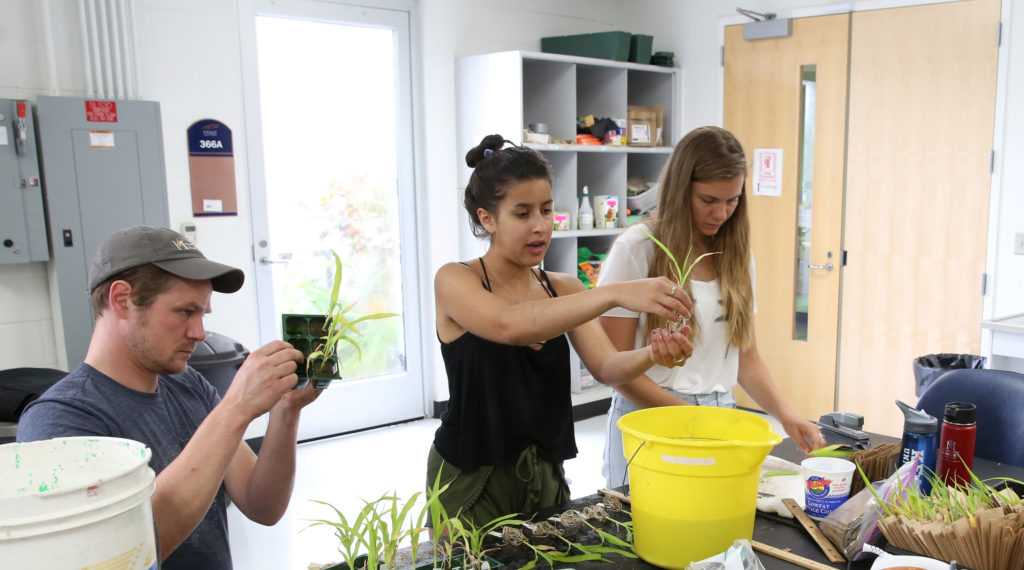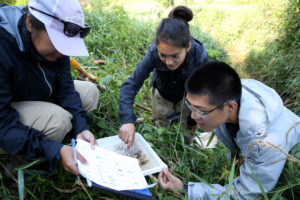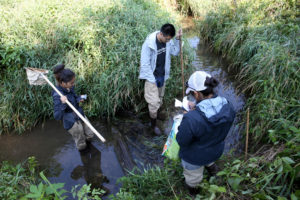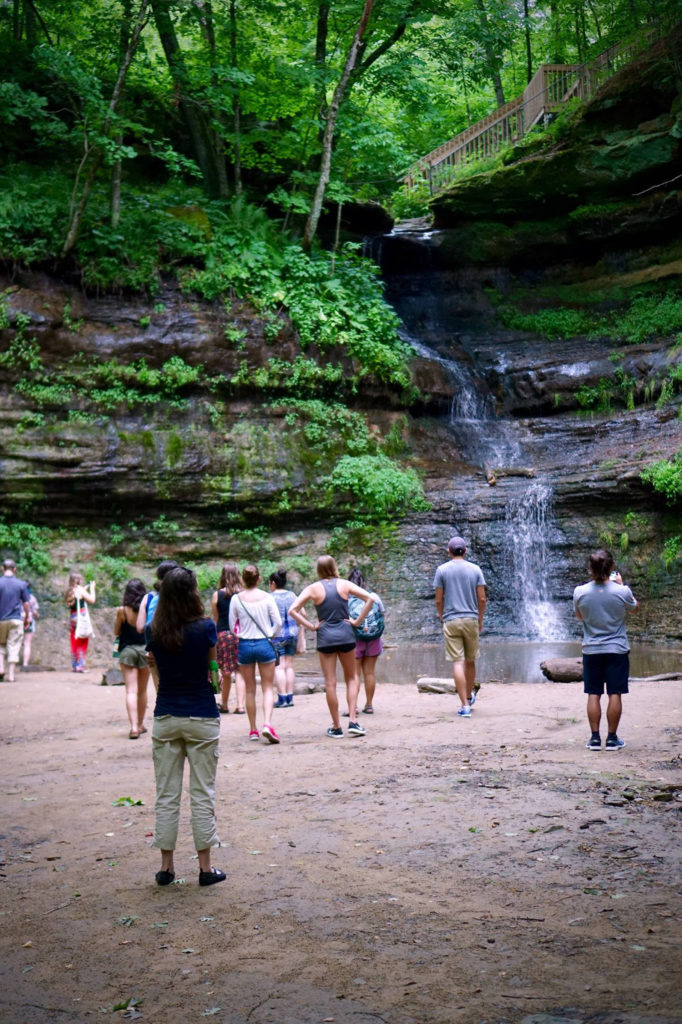
UW-Stout biology instructor Arthur Kneeland, left, works with LAKES REU students Elise Martinez, center, and Sarah Mack in a university lab. They are growing corn and other plants in sediment taken from a local waterway.
Menomonie, Wis. — New studies on the Red Cedar River watershed, including Lake Menomin, Tainter Lake and the Chetek chain of lakes, were presented in forums in Menomonie and Chetek in early August.
Thirteen university students from around the U.S. explained their summer research to the public at the Raw Deal restaurant in Menomonie and at Gilligan’s restaurant in Chetek.
The students are part of LAKES REU, a summer research experience for undergraduates at University of Wisconsin-Stout. The eight-week program studies issues related to blue-green algae in the watershed and how the compromised water quality affects quality of life in the region.

LAKES REU students, from left Elizabeth Sosa, Stephanie Gonzalez and Jimmy Chin, identify organisms in the north branch of Wilson Creek near Knapp.
Issues researched this summer are: public policies; citizen and community involvement; financial benefits to farmers of reducing run-off; reducing blue-green algal blooms in lakes; impact of soil erosion on water quality; how farmers can convert to conservation agriculture; and what CAFOs (concentrated animal feeding operations) can do to improve water quality.
“This is a significant expansion on the LAKES REU research from the previous three summers,” said UW-Stout Associate Professor Nels Paulson, co-director with Associate Professor Chris Ferguson. “The student research will facilitate data-driven discussions on a range of issues from farming to community engagement to potential economic gains to practical technical solutions to this issue.”
The students, their home universities, research focus and UW-Stout faculty advisers are:
- Madison Biggs, Drake University, economics; Chris Ferguson
- Jimmy Chin, University of North Carolina, economics; Zach Raff
- Kayleigh DeBruyne, Pacific University, anthropology; Tina Lee
- Amber Georgakopoulos, UW-Stout, anthropology; Tina Lee
- Stephanie Gonzalez, UCLA, geography; Innisfree McKinnon
- Sadie Higgins, Hampshire College, sociology; Nels Paulson
- Andrew Hutchens, University of Central Florida, economics; Zach Raff
- Bailey Kramer, UW-Stout, biology; Arthur Kneeland
- Sarah Mack, Kean University, biology; Arthur Kneeland
- Elise Martinez, University of Colorado, sociology; Nels Paulson
- Ryleigh Prochnow, UW-La Crosse, economics; Chris Ferguson
- Elizabeth Sosa, Sam Houston State University, geography; Innisfree McKinnon
- Katherine Zuniga, University of Arizona, anthropology; Tina Lee

LAKES REU students, from left Stephanie Gonzalez, Jimmy Chin and Elizabeth Sosa, do research on the north branch of Wilson Creek near Knapp.
LAKES was reapproved this year for another three years by the National Science Foundation, receiving a $303,000 grant. The first LAKES grant cycle ran from 2014-16.
LAKES REU stands for Linking Applied Knowledge in Environmental Stability Research Experience for Undergraduates. Learn more at www.uwstout.edu/lakes.
During the first three years, LAKES’ 32 students produced 31 research projects on social, economic, ecological, cultural and spatial issues related to the toxic blooms, which are caused by excessive phosphorous in the waterways.
Along with the student research, LAKES is collaborating with the U.S. Army Corps of Engineers and the Wisconsin Department of Natural Resources, which has $500,000 in funding for a related watershed project called the Red Cedar River Water Quality Partnership. “We’re trying to make sure our results directly integrate into their own research and decision-making,” Paulson said.
LAKES also collaborates with other area entities and agencies, including the Tainter/Menomin Lake Improvement Association, Dunn County, Barron County, City of Menomonie, Red Cedar Lakes Association, Chetek Lakes Protection Association and the Big Chetac and Birch Lakes Association.
The watershed includes about 40,000 acres of open water and 4,900 miles of waterways.

